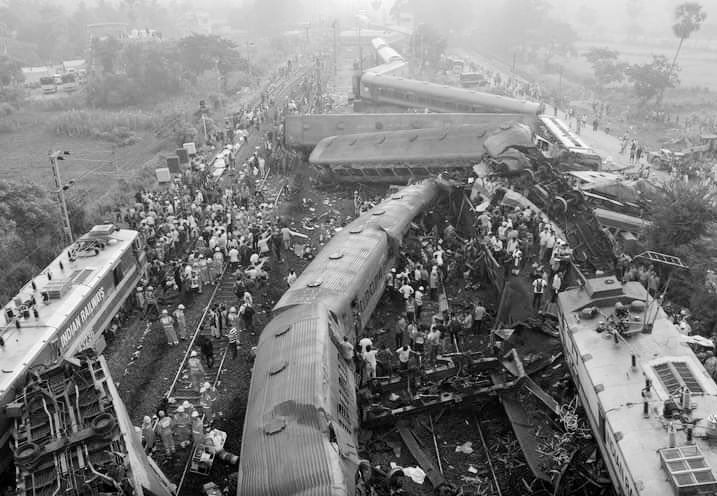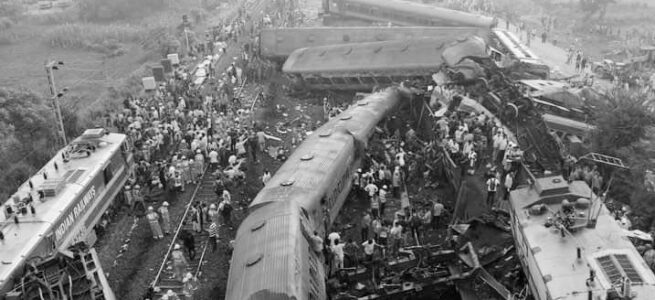India has faced several train derailments in its history, and the root causes have varied over time. Developing an IoT and sensor-based device to address various challenges related to railway tracks and train operations involves multiple technical aspects. While a single device may not be able to solve all these problems, I can provide an overview of the technical details for each specific issue.
Here are some notable incidents and their associated causes and IoT & sensor-based devices to resolve the issue:
- Khanna Rail Crash (1998): The derailment near Khanna in Punjab was caused by a fractured rail due to corrosion. The lack of regular track maintenance and inspection contributed to the accident.
Track Defect Detection:
- Sensors: Various sensors can be employed, such as accelerometers, strain gauges, or acoustic sensors, to monitor track conditions for defects like cracks, rail wear, or misalignment.
- Data Analysis: Collected sensor data can be processed using signal processing algorithms or machine learning techniques to identify anomalies indicative of track defects.
- Communication: The device should have wireless connectivity to transmit real-time data to a central monitoring system for analysis and alerts.
- Gaisal Train Disaster (1999): The Gaisal train accident in West Bengal occurred due to a collision between two trains. The primary cause was human error, as the signal was overlooked, leading to the collision and subsequent derailment.
Failure to Follow Signal Instructions:
- Image/Video Processing: Cameras installed on trains can capture signals and analyze them using computer vision techniques to detect any failure to follow signal instructions.
- Machine Learning: Train control systems can be trained using machine learning algorithms to recognize signal patterns and detect violations.
- Communication: Detected violations can be transmitted to the central control system through wireless communication for appropriate action.
Wagon Failure:
- Load Sensors: Strain gauges or load cells can be used to measure the weight distribution and detect anomalies, such as overloaded or imbalanced wagons.
- Real-time Monitoring: Continuous monitoring of wagon parameters, such as vibrations, temperature, or bearing conditions, can be performed using appropriate sensors.
- Data Analysis: Sensor data can be processed and analyzed to identify potential wagon failures or malfunctions.
- Communication: Real-time data can be transmitted wirelessly to the central control system for immediate action or maintenance scheduling
- Sainthia Train Collision (2010): The collision between two trains in West Bengal was primarily attributed to human error. The driver of one train disregarded a signal, leading to the collision and derailment.
Overloading Trains:
- Load Sensors: Similar to wagon failure detection, load sensors can be utilized to measure the weight of individual wagons and the overall train to detect overloading.
- Weigh-in-Motion Systems: Weigh-in-motion systems installed on railway tracks can measure the weight of passing trains to identify potential overloading.
- Communication: Overloading alerts can be sent to the central control system or relevant authorities for necessary interventions.
- Kanpur Train Derailment (2016): One of the deadliest train accidents in recent history, this incident occurred due to a fractured rail caused by external sabotage. The track was reportedly tampered with, resulting in derailment.
External Sabotage:
- Security Cameras: Installing surveillance cameras along the tracks and at critical infrastructure points to monitor and detect any external sabotage attempts.
- Intrusion Detection Systems: Employing intrusion detection systems that utilize motion sensors, vibration sensors, or infrared sensors to detect unauthorized access or tampering.
- Real-time Monitoring: Continuous monitoring of track conditions and critical infrastructure points to identify any abnormalities or suspicious activities.
- Communication: Alerting security personnel or authorities in real-time through wireless communication in the event of detected sabotage attempts.
- Pukhrayan Train Derailment (2016): Another major accident, this derailment in Uttar Pradesh was caused by a fracture in the track due to an overheated axle. The lack of proper maintenance and failure to identify the defect during inspections contributed to the incident.
Track Maintenance and Inspection:
- Remote Monitoring: Deploy IoT-enabled devices along the tracks to continuously monitor track conditions, including factors like temperature, vibrations, or moisture levels.
- Sensor Fusion: Integrating multiple sensors, such as accelerometers, temperature sensors, or corrosion sensors, to gather comprehensive data for track maintenance and inspection.
- Predictive Analytics: Analyzing historical data and real-time sensor inputs using machine learning algorithms to predict track maintenance needs and identify potential failures.
- Communication: Transmitting maintenance and inspection reports to the central system for scheduling and planning.
Balasore Train Derailment (June 2023): The cause of the Balasore train accident was a failure in the electronic interlocking system, which resulted in conflicting movements between trains. The system did not properly verify the safety of the route, leading to the accident and highlighting the importance of maintaining and ensuring the reliability of such safety mechanisms.
Long-range collision avoidance
IoT and sensor-based device for long-range collision avoidance require careful consideration of various technical aspects. Here’s a breakdown of the key components and technical details involved:
- Long-Range Sensing: To detect objects from a 20 km distance, a combination of long-range sensors such as radar and LIDAR would be suitable. These sensors emit signals (radio waves or laser beams) and measure the time it takes for the signals to bounce back from objects. This information is used to calculate the distance, position, and speed of the objects.
- Wireless Connectivity: The device should be equipped with wireless connectivity, such as cellular networks (e.g., 4G or 5G) or long-range low-power communication protocols (e.g., LoRa or NB-IoT). This enables the device to transmit sensor data to a central processing unit or cloud platform for analysis and decision-making.
- Edge Computing: Employing edge computing capabilities allows the device to perform real-time data processing and analysis locally, reducing latency and dependence on cloud connectivity. This can be achieved by integrating a microcontroller or a small computing unit on the device itself.
- Data Processing and Analytics: The device’s computing unit should have sufficient processing power to handle the sensor data. This includes extracting relevant information from raw sensor readings, such as object position, velocity, and trajectory. Advanced analytics techniques, like machine learning algorithms, can be employed to enhance object detection and collision prediction accuracy.
- Power Management: Since the device is likely to be deployed in remote locations, power management is crucial. Power-efficient components, energy harvesting techniques (e.g., solar panels), and rechargeable batteries can be used to ensure reliable and sustainable operation.
- Localization and Positioning: Accurate localization and positioning of the device itself are essential. Global Navigation Satellite System (GNSS) receivers, such as GPS, can be integrated into the device to determine its precise location.
- User Interface and Alerting: The device should have a user interface, which can be a display or a smartphone application, to provide real-time feedback and alerts to the Loco pilot or Railway Operator. In the event of a potential collision, visual or auditory warnings can be issued to the operator.
- Integration with Existing Systems: Depending on the application, the IoT device should be designed to integrate with existing systems, such as autonomous vehicles, traffic management systems, or industrial automation systems. This ensures seamless coordination and communication between different components of the overall system.
- Compliance and Security: It is crucial to consider compliance with relevant regulations and standards, especially in safety-critical applications. Additionally, implementing robust security measures, such as encryption and authentication protocols, protects the device and its communication channels from unauthorized access and data breaches.
These are high-level technical considerations for addressing the mentioned challenges. The specific implementation details would depend on factors such as the scale of the railway network, available infrastructure, budget, and operational requirements. Collaborating with experts in railway engineering, IoT, sensor technology, and data analytics would be crucial for successful development and deployment.

